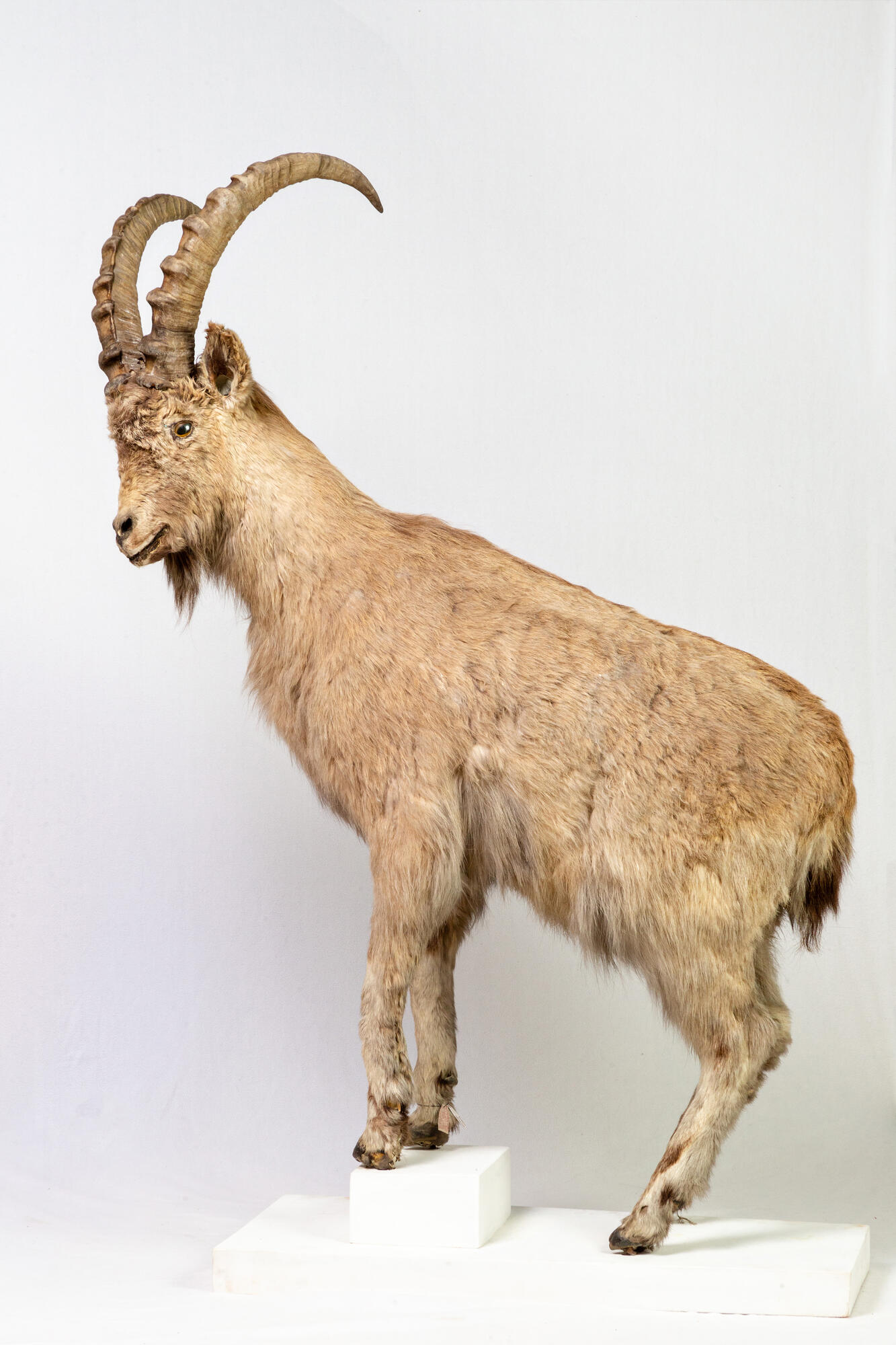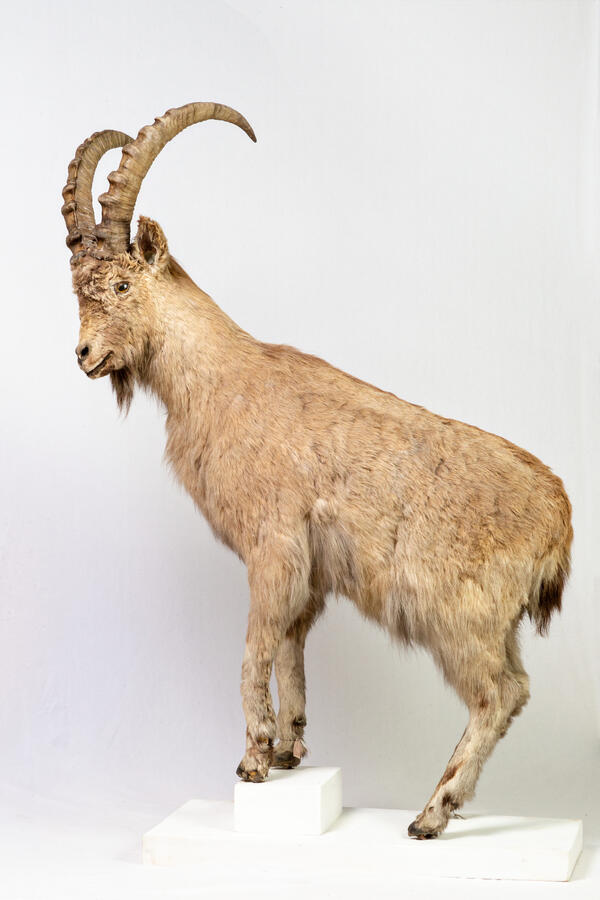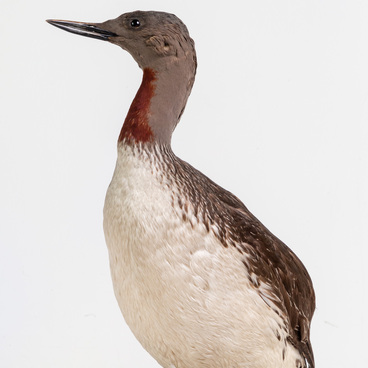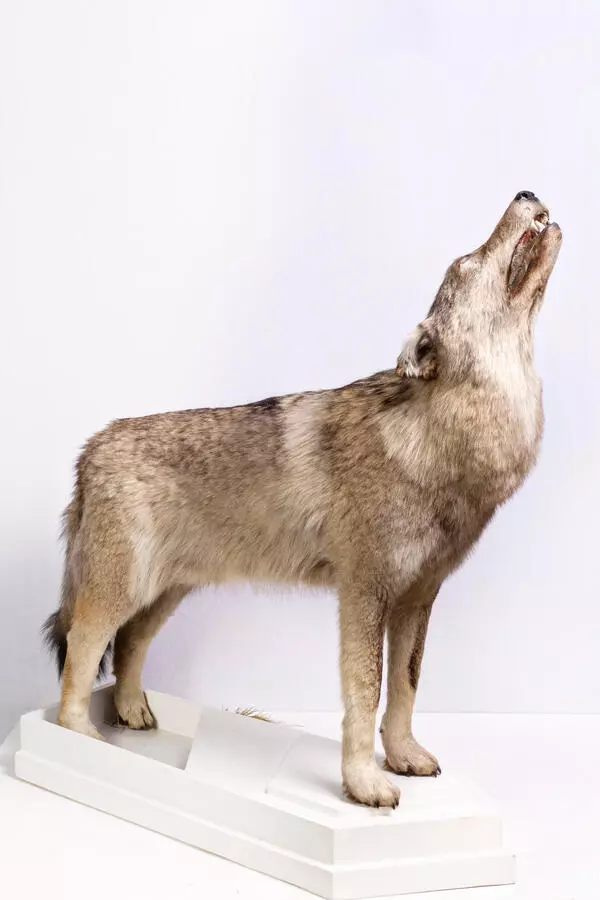Siberian ibexes are real climbers of the animal world. They are strong, hardy, and agile. For their nature, lifestyle, and ability to conquer the most inaccessible rocks, these animals received a second name, i.e. the Himalayan ibex.
They live in remote areas of mountains with steep slopes, numerous rocks, and rocky screes. In the rocks, it escapes from the wolves, and here it rests on the beds. Adult males climb especially high in the rocks, while females stay lower with young. Males and females wear horns all their lives. The horns are hollow inside. The lower part is firmly planted on the frontal protrusion of the skull, i.e. the rod. The horns of males are beautiful, large, thick, as well as curved back and down. In females, the horns are small and usually without rollers. By the horns of the male, one can find out the age of the animal. For this, divide the number of rollers in half and add one. The weight of males reaches an impressive figure of 150 kilograms, but this does not prevent them from deftly and skillfully maneuvering among the rocks. The body is muscular, lean, and slender. The legs are not long, and quite thick. They end in thin, flat hooves. The hooves of the mountain goat are designed to avoid slipping on smooth, strongly sloping surfaces. On the sides of the hooves there is a special protrusion, i.e. a welt, and the pads of the fingers are relatively soft. The substance of the hooves grows quickly, so that they do not have time to wear out. The structure of the legs allows for making big jumps on steep slopes and hiding from predators.
The animals have a very thick down under the coat, so the heat-protective properties of the coat are high. These animals are extremely cautious and timid, and well-developed vision and sense of smell help them avoid many dangers. Alarmed animals emit a sharp whistle.
Their natural enemies are wolves, lynxes, wolverines, and snow leopards. Young goats can be attacked by foxes and golden eagles. Young males often leave their group, thus traveling tens of kilometers from their relatives. Observations have shown that this behavior is due to the hierarchy and role of these individuals. Up to a certain age, they perform the role of scouts, check the area for dangers, and search for food-rich places. In winter, the herd is warned about the approach of predators not only by receding scouts. Snow cocks, the birds from the pheasant family, settle near them and warn their neighbors of the danger before they notice it.
They live in remote areas of mountains with steep slopes, numerous rocks, and rocky screes. In the rocks, it escapes from the wolves, and here it rests on the beds. Adult males climb especially high in the rocks, while females stay lower with young. Males and females wear horns all their lives. The horns are hollow inside. The lower part is firmly planted on the frontal protrusion of the skull, i.e. the rod. The horns of males are beautiful, large, thick, as well as curved back and down. In females, the horns are small and usually without rollers. By the horns of the male, one can find out the age of the animal. For this, divide the number of rollers in half and add one. The weight of males reaches an impressive figure of 150 kilograms, but this does not prevent them from deftly and skillfully maneuvering among the rocks. The body is muscular, lean, and slender. The legs are not long, and quite thick. They end in thin, flat hooves. The hooves of the mountain goat are designed to avoid slipping on smooth, strongly sloping surfaces. On the sides of the hooves there is a special protrusion, i.e. a welt, and the pads of the fingers are relatively soft. The substance of the hooves grows quickly, so that they do not have time to wear out. The structure of the legs allows for making big jumps on steep slopes and hiding from predators.
The animals have a very thick down under the coat, so the heat-protective properties of the coat are high. These animals are extremely cautious and timid, and well-developed vision and sense of smell help them avoid many dangers. Alarmed animals emit a sharp whistle.
Their natural enemies are wolves, lynxes, wolverines, and snow leopards. Young goats can be attacked by foxes and golden eagles. Young males often leave their group, thus traveling tens of kilometers from their relatives. Observations have shown that this behavior is due to the hierarchy and role of these individuals. Up to a certain age, they perform the role of scouts, check the area for dangers, and search for food-rich places. In winter, the herd is warned about the approach of predators not only by receding scouts. Snow cocks, the birds from the pheasant family, settle near them and warn their neighbors of the danger before they notice it.






